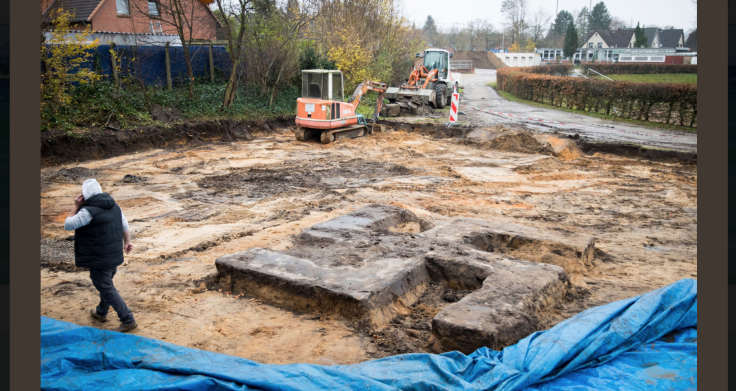Giant Concrete Swastika Discovered Beneath German Sports Field

A massive concrete swastika was discovered in Germany last week while a construction crew was excavating a foundation for new locker rooms at an athletic field.
The roughly 13-foot by 13-foot concrete swastika was discovered in Hamburg, Germany. An excavator was removing dirt when it unexpectedly hit the emblem, according to the chairman of the Billstedt-Horn sports club, Joachim Schirmer. The Nazi symbol was buried around 1.3 feet underground.
A giant Swastika-shaped foundation is uncovered on a building site in Hamburg after it was discovered during construction works on a sport field. pic.twitter.com/GZby1HSvL8
— Elliot Wagland (@elliotwagland) November 21, 2017
The concrete swastika served as a foundation for a monument that was torn down decades ago, according to the Associated Press. City officials said they want the symbol removed, and because it is too large to be lifted away with an excavator, they planned to destroy it with jackhammers.
After World War II, Germany passed strict laws banning the Swastika and certain hate speech centered around Nazi ideology. The law covers a variety of symbols related to Nazi Germany and the Nazi party.
The swastika was originally an ancient religious symbol associated with Hinduism, Buddhism and Jainism and denoted well-being, peace, good luck and success. The symbol was eventually co-opted by white supremacy movements in the 20 the century.
Use of the symbol was discovered on site of ancient Troy by German archeologist Heinrich Schliemann who theorized that it was linked to very early Europeans. The symbol was eventually tied to a German populist ideology called the Völkisch movement. That ethno-nationalist movement became an essential part of Nazi ideology.
© Copyright IBTimes 2025. All rights reserved.





















